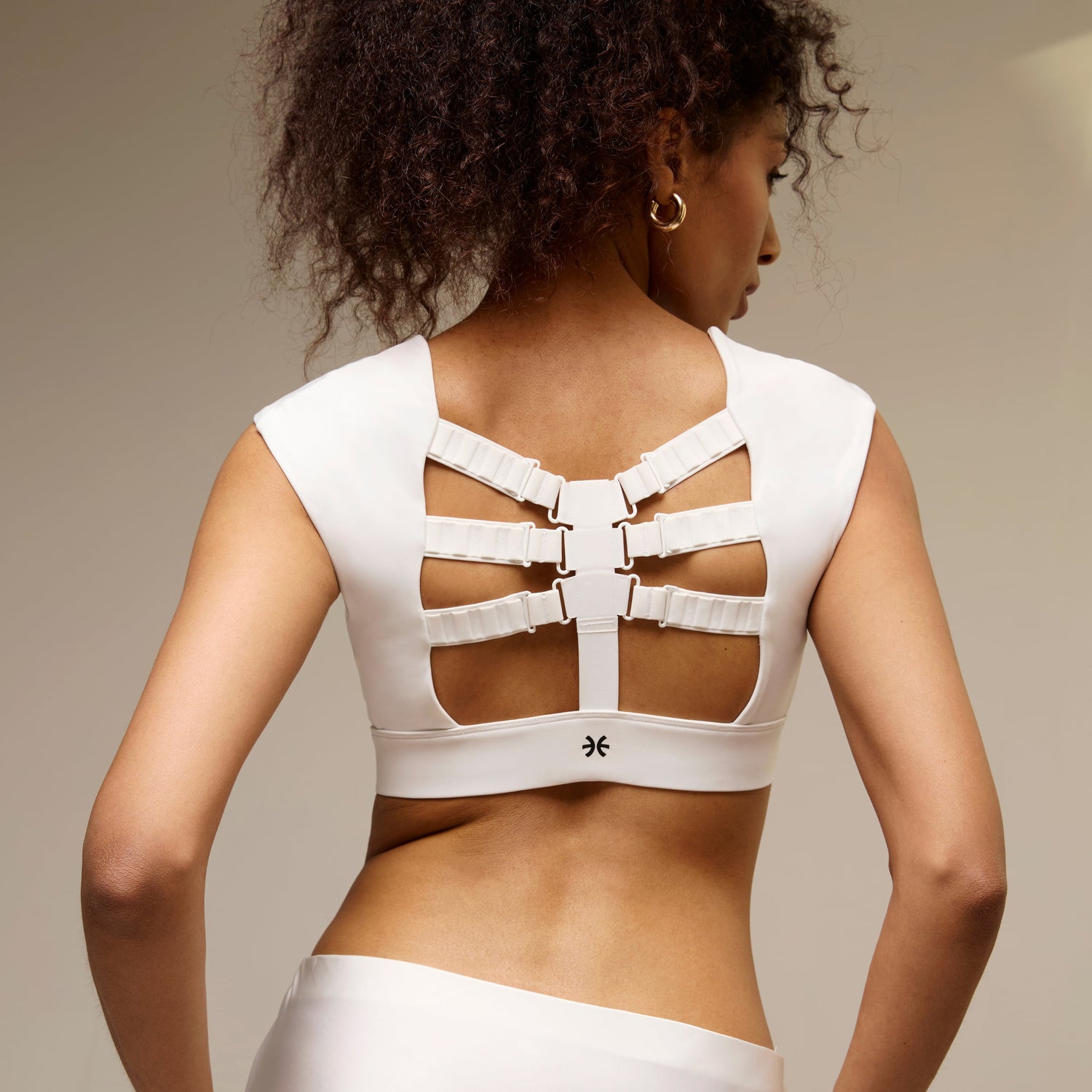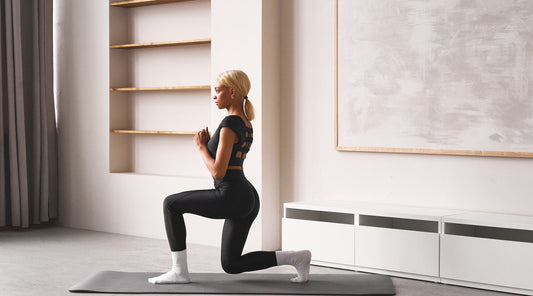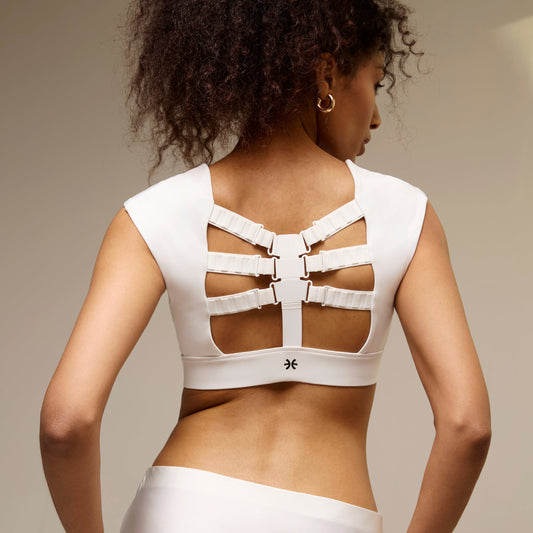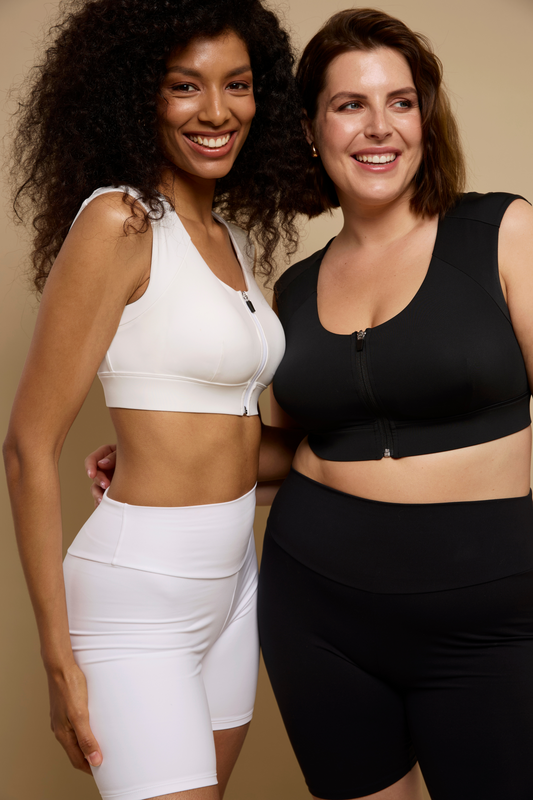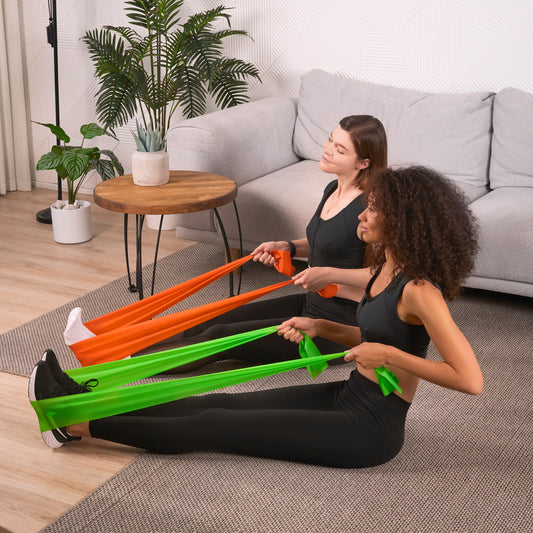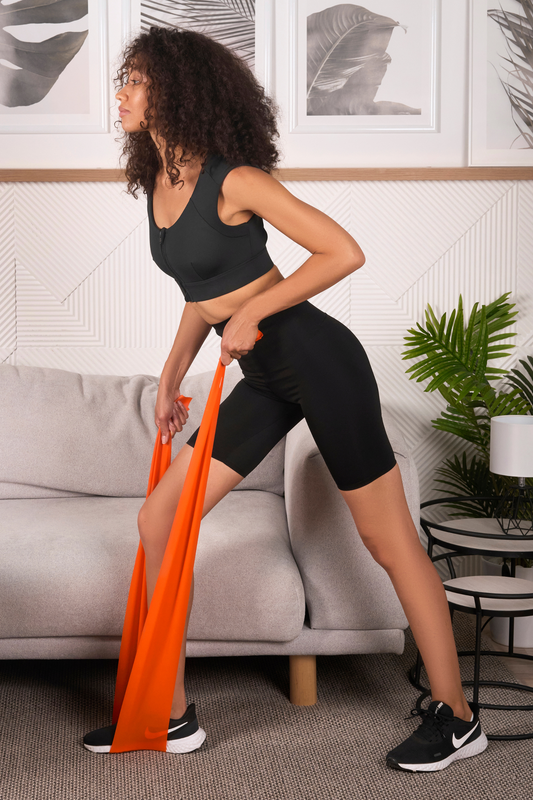Being tall gives you a unique perspective — in more ways than one. But as much as height can be an asset, it can also feel like a hindrance.
Tall women have unique challenges. There are the obvious obstacles: low doorways, seats, desks, and countertops; ill-fitting clothing; too-short beds. Even tall mothers can struggle to find strollers that are comfortable for their frame. But there are also psychological barriers. Sometimes you don’t want to literally stand out in a crowd, come off as intimidating, or be constantly told, “You’re so tall!” And so you may compensate.
You may slouch, just a little bit at first, but eventually it becomes a habit. Instead of embracing your height, you keep shying away from it. This is not only affecting you physically, but also emotionally.
Your posture can reveal a lot about how you feel and how you feel about yourself. An upright posture evokes confidence, both outwardly and inwardly. Simply standing tall can do a lot for your career success and your self-esteem.
Let’s take a closer look at how posture affects confidence and the best posture practices for tall women.
Why Posture Matters for Tall Women
There are a number of reasons why taller women may struggle more with good posture. Not only can height make coordination and stability more of a challenge, you also have to deal with a world too often designed for smaller statures.
Common Posture Challenges for Tall Women
Physically, a tall frame may require more work to coordinate movements and maintain balance. Longer limbs and a longer spine can make you more susceptible to muscular imbalances and misalignments. Environmentally, you have to constantly adjust to small chairs, short desks, low ceilings, the works. Socially, you may subconsciously shrink your body as a way to blend in.
Signs and symptoms of poor posture include:
- Rounded shoulders
- Forward head posture
- Posterior pelvic tilt (when the glutes tuck in and the hips roll under)
- Stiffness and pain in the neck and back
- Tension and soreness in the shoulders
- Headaches
- Fatigue

There are also some more unexpected risks of poor posture, including digestive issues and increased wear and tear on your joints.
The Link Between Posture and Confidence
While the physical and aesthetic effects of posture may be more tangible, there’s plenty of evidence that shows posture can also have a profound impact on how you appear to others — and yourself.
One study that tested 68 women found that those who adopted an “expansive posture” (versus a “contractive” one) experienced improved positive emotions, reduced negative emotions, and increased body satisfaction (1).
Another study looked at how students rated themselves as future professionals. Those who held an upright posture were more likely to rate their positive traits higher and their negative traits lower. That is, they appeared to be more confident in how they viewed themselves — whether from a positive or negative perspective (2).
Does good posture beget confidence? Try it for yourself. First, get into a slouched position. How does it feel? Now, take a deep breath, draw your shoulder blades back, bring your chin parallel to the floor, and open up your chest. Feel a difference? Think about that little action being done all day long.
Best Posture Practices for Tall Women
Is your height taking a toll on your posture? Making little changes in your lifestyle will have you standing taller and with more confidence. Here are some valuable posture tips for tall women.
Proper Sitting and Standing Alignment
Let’s start with understanding what a proper sitting and standing posture looks and feels like.
When you’re sitting, keep your:
- Ears in line with your shoulders
- Chin parallel to the ground
- Shoulders relaxed
- Hips evenly aligned and slightly higher than your knees
- Feet flat on the floor
- Eyes at screen level (if at a computer)

When you’re standing, keep your:
- Head up (imagine a string pulling you upward)
- Ears in line with your shoulders
- Chin parallel to the ground
- Shoulders relaxed
- Core slightly engaged
- Pelvis slightly tucked in
- Knees slightly bent
- Feet pointing forward with weight distributed evenly

During extended periods of sitting or standing, try to take a break at least every 30 minutes to take a few deep breaths and do a quick scan of your body.
Supportive Accessories and Footwear
Investing in a few supportive accessories can also help you maintain better posture throughout the day. These are a few things we think are worthy of including in your posture toolkit:
- A well-fitted workspace, preferably with an adjustable desk and chair
- A comfortable posture corrector to help you maintain good posture during any activity
- Supportive footwear and arch support insoles

If you’re working from home, here are a few more tips on how to create a posture-friendly workspace.
Simple Posture Correction Techniques
Practicing proper alignment will also come easier with a stronger, more flexible you. There are many specific exercises and stretches that can help correct any muscular imbalances that may be contributing to poor posture. A balance of strength and flexibility in your core and the muscles around your shoulders and spine will make good posture come more naturally.
Exercises To Strengthen the Back and Improve Posture
Grab some light dumbbells and resistance bands and incorporate these exercises into your movement routine at least a few days a week:
Bent over fly. This exercise strengthens your upper back and shoulders.
- With a dumbbell in each hand, bend at the hips while engaging the core and maintaining a neutral back. Bend until your chest is parallel to the ground.
- Bring the weights in front of you, with your palms facing each other and a micro-bend in your elbows.
- Exhale, lengthen your spine, and bring your arms out wide to create a letter “T.” Squeeze your rear deltoids (rear shoulder muscles) and keep your chest open throughout the movement.
- Inhale as you bring the weights slowly back down and your palms together.
- Repeat for 10-12 reps and 3-4 sets.
Resistance band seated row. This exercise strengthens the upper back muscles, including the lats and rhomboids (deep shoulder muscles).
- Sit down and wrap a resistance band around the soles of both feet with one end of the band in each hand.
- Extend your legs in front of you.
- Check your posture. Sit up tall, relax your shoulders, keep your chin parallel to the ground, and your chest slightly open.
- Pull the band back, driving your elbows behind you as you squeeze your shoulder blades together.
- Repeat for 10-12 reps and 3-4 sets.
Check out more exercises for improving posture, alleviating back pain, and enhancing core strength.
Stretches for Shoulder and Neck Relief
Stretching can be done just about anywhere, even at your desk. Try to do at least a few stretches every day, including these:
Chest opener and wide-legged forward fold. Feel instant relief from the upper back to the backs of the legs with this full-body stretch.
- Stand tall with your feet wide apart and your toes slightly pointed inward.
- Bring hands behind your back, interlace your fingers, and open your chest. If you can’t connect your fingers, grab a towel to hold in each hand.
- Lengthen your spine, bend at the hips, and bring your chest down towards the ground.
- Let gravity help you sink into the pose.
- Pull your hands forward for a deeper stretch in the chest and shoulders.
- Hold for up to a minute, then come back up slowly.
Levator scapula stretch. This stretch can be done either standing or sitting down to feel relief in the back of your neck.
- Raise the right arm, reach over your back, and apply pressure on the right shoulder blade.
- Rotate your head to the left about 45 degrees.
- Tilt your chin down to feel a stretch on the back right side of the neck.
- For a deeper stretch, bring your left hand to the back of the head and gently pull down.
- Hold for up to one minute, slowly come out of the stretch, and repeat on the other side.
For more helpful stretches, check out some key yoga poses for better posture.
How Etalon Can Help with Posture Correction for Tall Women
Along with knowing how good posture feels and incorporating regular exercises and stretches into your daily movement routine, wearing a posture corrector like Etalon can help you maintain better posture throughout the day.
With an innovative ergonomic design that includes adjustable straps, Etalon works by gently pulling the shoulder blades toward one another. This action helps to open your chest, stabilize your spine, and prevent slouching. Wearing Etalon regularly will also help train your muscles to find good posture more naturally.
With good posture comes less pain and more confidence. Don’t shy away from your height. It’s one of the many things that make you you. Embrace It!
SOURCES:
1. PLoS One. “Expand your body when you look at yourself: The role of the posture in a mirror exposure task.” (2018). https://pmc.ncbi.nlm.nih.gov/articles/PMC5865731/
2. Ohio State University. “Study: Body Posture Affects Confidence In Your Own Thoughts.” (2009).
https://news.osu.edu/study--body-posture-affects-confidence-in-your-own-thoughts/
Photo by Yan Krukau on Pexels
FAQs
How can tall women prevent back pain caused by poor posture?
What tools or devices can help with posture correction for tall women?
How does poor posture impact long-term health for tall women?
What are common mistakes tall women make with posture, and how to avoid them?
Trending
Try Etalon posture improvement products
